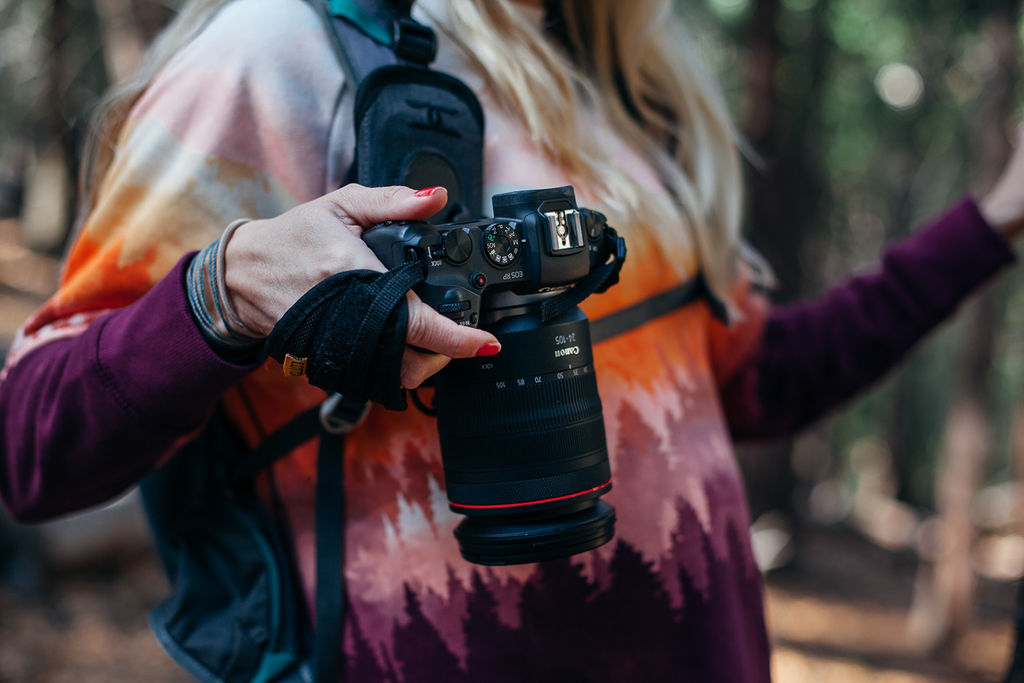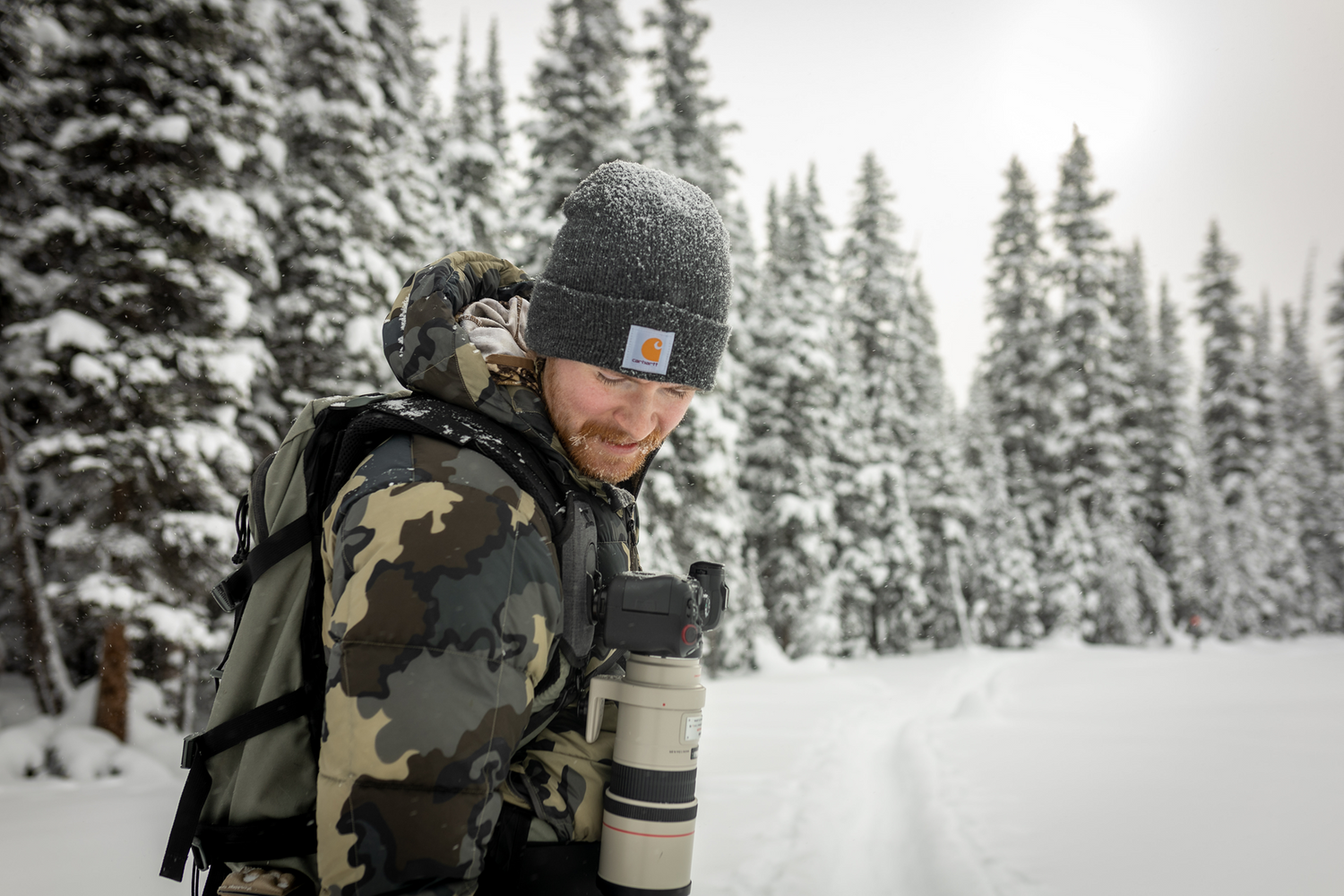Capturing stunning wildlife photos requires more than just a good camera and a sharp eye. To get those incredible close-ups of animals in their natural habitat, you need to blend into the environment, reducing your presence and minimizing disruption. Whether you're photographing birds, mammals, or reptiles, the key to great wildlife photography is making yourself as invisible as possible to the animals around you. Here are some essential tips on how to blend in while taking photos of wildlife, including the benefits of using a camo print harness for your camera gear.
1. Choose the Right Clothing
Wildlife often perceives humans as potential threats, so dressing appropriately can help you avoid startling your subjects.
- Wear Earth Tones: Stick to neutral colors like greens, browns, and grays that mimic the natural environment. Bright or reflective clothing can easily catch the attention of animals and scare them away.
- Camo Patterns: For more advanced camouflage, consider clothing with camo patterns designed to blend into specific environments, such as forests, grasslands, or wetlands. This can help you become almost invisible to wildlife, particularly if you're shooting in close proximity.
2. Use a Camouflage Camera Harness or Sling
When you’re focused on capturing the perfect shot, fumbling with your equipment can ruin the moment and potentially scare off your subject. Using a camo print camera harness or camouflage camera sling can solve this problem.
- Keep Your Hands Free: A camo print camera harness or sling allows you to keep your camera close at hand without the need to constantly hold it. This setup not only makes it easier to hike through the wilderness, but it also helps keep your movements subtle when you're ready to shoot.
- Stay Stealthy: The camouflage design of your harness will help you blend in with your surroundings, making it less likely that your gear will catch an animal's eye. A standard black or brightly colored strap can stand out, but a camo harness integrates with your environment, adding an extra layer of stealth.

3. Control Your Movements
In the wild, animals are highly attuned to movement. Sudden, sharp motions can send them running, so it's important to move deliberately.
- Slow and Smooth Movements: Whether you're adjusting your camera, changing your position, or simply walking through the area, keep your movements slow and steady. Avoid any sudden jerks or quick movements that could draw attention.
- Crouch or Sit: When possible, lower your profile by crouching or sitting on the ground. This makes you appear less threatening to wildlife and allows you to blend in better with the environment.
4. Mask Your Scent
Many animals, especially mammals, have an excellent sense of smell. Your scent can give you away long before an animal sees or hears you.
- Avoid Scented Products: Skip the perfume, cologne, or strongly scented deodorants when heading out for wildlife photography. These artificial scents can be detected by animals from a great distance.
- Use Scent-Masking Products: Some photographers use scent-masking sprays designed for hunters, which can help reduce human odor and make you less noticeable to wildlife.
5. Blend into the Environment
In addition to your clothing and movements, how you position yourself in the environment plays a key role in staying unnoticed by wildlife.
- Use Natural Cover: Position yourself near natural elements like trees, bushes, or rocks to break up your silhouette. Avoid standing in open areas where your shape is easily recognizable from a distance.
- Stay Downwind: Position yourself so that the wind carries your scent away from your subject. Animals often rely on the wind to detect predators, so staying downwind can help you remain undetected.
6. Be Patient and Observant
Wildlife photography is often a game of patience. To get that perfect shot, you need to be willing to wait and watch.
- Find a Good Spot and Stay Put: Once you've found a promising location, settle in and wait. Animals are more likely to come closer if they don't perceive you as a threat. The longer you stay still, the more likely you are to capture natural behaviors.
- Observe Animal Behavior: Pay attention to the animals' body language. If they appear nervous or agitated, back off and give them more space. Respect their boundaries and avoid putting too much pressure on them just for the sake of a photo.
7. Use Silent Shooting Modes and Minimize Noise
Noise is another big factor that can scare off wildlife. Fortunately, most modern cameras offer features to help you minimize the noise you create.
- Silent Shutter Mode: Many cameras now offer a silent or electronic shutter mode that reduces or eliminates the sound of the shutter click. Use this feature whenever possible to avoid startling animals with loud noises.
- Minimize Equipment Noise: Be mindful of other noises your equipment might make, such as the sound of adjusting a tripod, opening a camera bag, or even zipping a jacket. Do a gear check before you head out to ensure that everything operates quietly.
8. Choose the Right Lens
A good telephoto lens is essential for wildlife photography, allowing you to get those close-up shots without actually being close to the animal.
- Telephoto Lenses: Opt for a lens with a focal length of at least 300mm or more, depending on your subject and distance. This allows you to maintain a safe and respectful distance while still getting high-quality, detailed shots.
- Consider a Lens Cover: Just as you camouflage yourself, consider using a camo cover for your lens. This can help reduce the visibility of the shiny or reflective parts of your gear.
Blending in while taking photos of wildlife requires thoughtful preparation and careful execution. From choosing the right clothing and gear, like a camo print camera harness, to controlling your movements and minimizing noise, every detail counts when you're out in the wild. The more you can reduce your presence and impact, the better your chances of capturing stunning, natural images of wildlife in their habitat.
Remember, patience and respect for wildlife are key to successful photography. By blending in, you'll not only improve your photos but also contribute to the well-being of the animals you’re observing.





